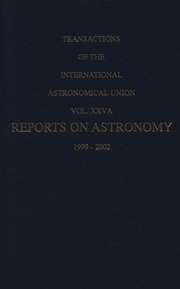No CrossRef data available.
Article contents
Astronomy Research in China
Published online by Cambridge University Press: 25 April 2016
Abstract
Decades of efforts made by Chinese astronomers have established some basic facilities for astronomy observations, such as the 2.16-m optical telescope, the solar magnetic-field telescope, the 13.7-m millimeter-wave radio telescope etc. One mega-science project, the Large Sky Area Multi-Object Fiber Spectroscopic Telescope (LAMOST), intended for astronomical and astrophysical studies requiring wide fields and large samples, has been initiated and funded.
To concentrate the efforts on mega-science projects, to operate and open the national astronomical facilities in a more effective way, and to foster the best astronomers and research groups, the National Astronomical Observatories (NAOs) has been coordinated and organizated. Four research centers, jointly sponsored by observatories of the Chinese Academy of Sciences and universities, have been established. Nine principal research fields have received enhanced support at NAOs. They are: large-scale structure of universe, formation and evolution of galaxies, high-energy and cataclysmic processes in astrophysics, star formation and evolution, solar magnetic activity and heliogeospace environment, astrogeodynamics, dynamics of celestial bodies in the solar system and artificial bodies, space-astronomy technology, and new astronomical techniques and methods.
- Type
- Section 4: Current Status of Astronomy Research in Developing Countries
- Information
- Copyright
- Copyright © Astronomical Society of Pacific 2001


